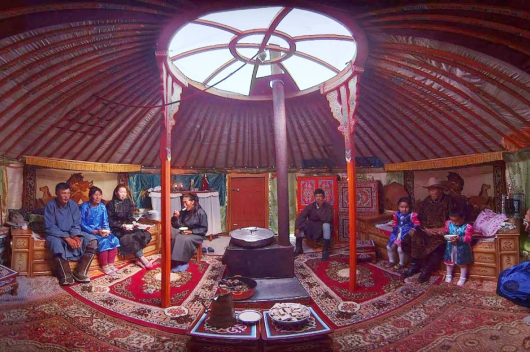A new study is showing that Mongolians were making cheese in 1300 BC. Mongolians lived a pastoralist, dairying lifestyle, for thousands of years — something which at one point, enabled them to conquer much of Asia and Europe under Chinggis Khaan.
The study traced milk proteins in tooth tartar. The milk proteins confirmed that dairy was consumed at the time, and in addition, whey and curd proteins were also recovered, indicating that people didn’t solely drink the milk.
The analyzed protein showed that livestock that was milked (cattle, goats, and sheep) are not native to the region and were likely introduced from the west. However, researchers also carried a DNA analysis of Mongolians who lived during the time (and whose graves were recently discovered), showing very little genetic contributions from western herders. This suggests that the dairying techniques were transferred culturally, and not by people who moved from west to east and settled in Mongolia.
“These findings suggest that neighbouring Western steppe herders directly or indirectly introduced dairy pastoralism to local indigenous populations primarily through a process of cultural exchange,” explains Choongwon Jeong, co-first and co-senior author, of the Max Planck Institute for the Science of Human History. “We don’t see evidence for the kind of large-scale population replacement by Western Steppe herders that has been observed in Bronze Age Europe or in the nearby Altai-Sayan region.”
Interestingly, none of the individuals was genetically capable of digesting the milk sugar lactose. Most Mongolians today are also not lactase persistent, despite consuming a large proportion of their diet as dairy products.
The human remains came from the so-called Deer Stone-Khirigsuur Complex (DSKC). A recent study on the same people showed that 3,000 years ago, Mongolians were capable of operating basic animal dentistry, a world first.
“The DSKC is well-known for their monumental architecture, including upright stones with deer and other motifs, and large stone mounds, often associated with one or more human burials,” explains co-first author Shevan Wilkin of the Max Planck Institute for the Science of Human History. “In some locations, these structures are highly conspicuous and visible from great distances.”
Ultimately, this paints an interesting scenario, one of significant cultural mobility across the Mongolian steppes — which could also enable researchers to understand similar situations in other parts of the world.
“The 3,000-year legacy of dairy pastoralism in Mongolia poses challenging questions to grand narratives of human adaptation and natural selection,” explains Christina Warinner, senior author, of the Max Planck Institute for the Science of Human History. “As a non-lactase persistent dairying society with a rich prehistory, Mongolia can serve as a model for understanding how other adaptations, such as cultural practices or microbiome alterations, may be involved in enabling and maintaining dairy-based cuisines around the world.” (zme science)
 3,376.83
3,376.83












Related News